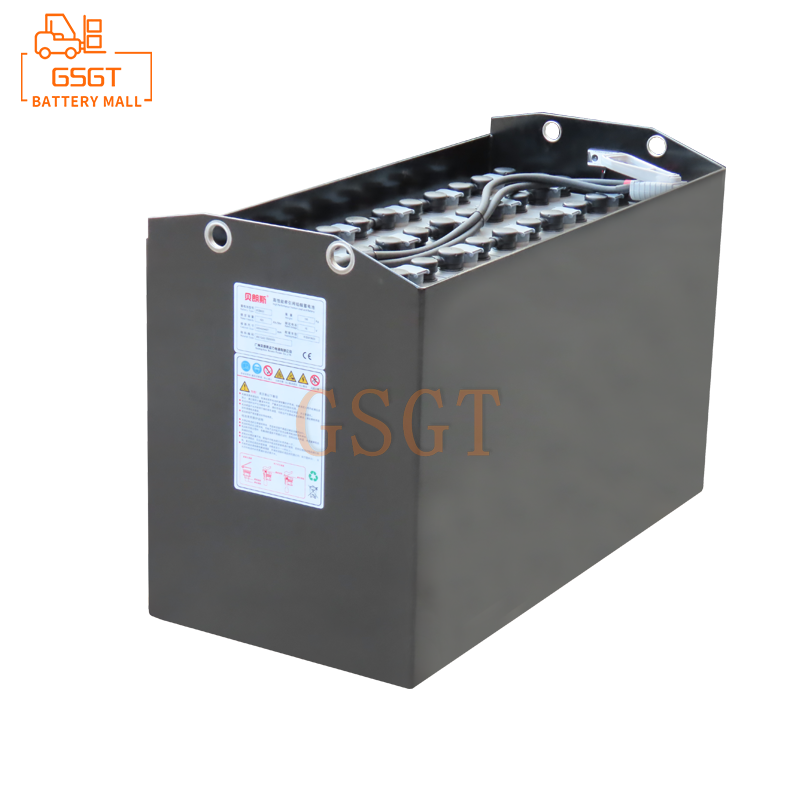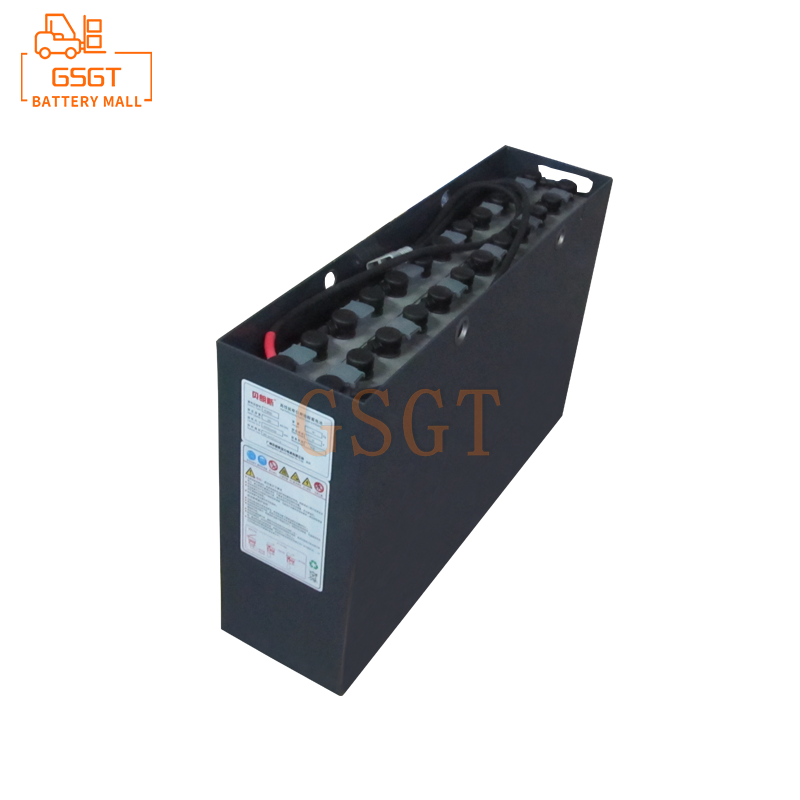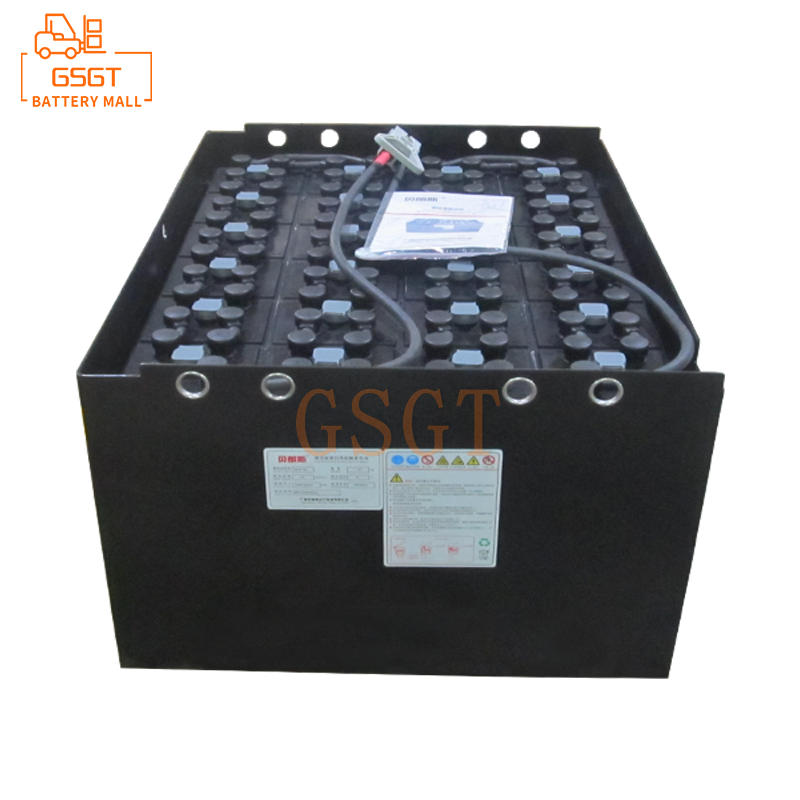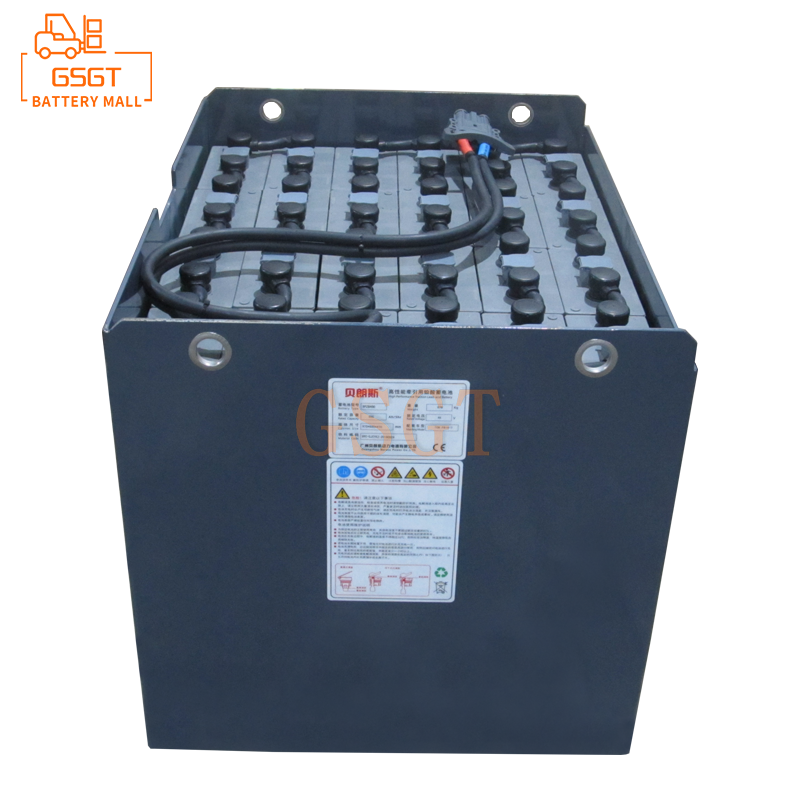Time:2025-04-30 11:08:12
Browse:628
Abstract
This article elaborates in detail on the practical skills and key precautions during the charging process of forklift lead-acid batteries, aiming to help forklift users and maintenance personnel charge lead-acid batteries more scientifically and efficiently, extend their service life, ensure the normal and stable operation of forklifts, and reduce operating costs.
1. Introduction
Forklifts, as indispensable and important equipment in modern logistics and warehousing industries, mainly rely on lead-acid batteries for their power sources. The performance and service life of lead-acid batteries directly affect the working efficiency and operating costs of forklifts. Correct charging techniques and strict adherence to precautions are the key factors in maintaining the good performance of lead-acid batteries and extending their service life. Therefore, a thorough understanding of the knowledge related to the charging of lead-acid batteries in forklifts is of great significance for ensuring the normal operation of forklifts and improving the economic benefits of enterprises.
2. Charging Techniques for Forklift Lead-Acid Batteries
(1) Choose the appropriate charger
1. **Match the specifications of the battery**
Forklift lead-acid batteries of different models, capacities and voltages require matching chargers. When choosing a charger, carefully check the nameplate information of the battery, including the rated voltage and capacity, to ensure that the output parameters of the charger are compatible with the battery. If the charger voltage is too high, it will cause the battery to overcharge, accelerating the aging and damage of the battery plates. If the voltage is too low, the battery cannot be fully charged, which will affect the forklift's endurance. Similarly, the output current of the charger should also match the capacity of the battery. Excessive current may cause the battery to heat up severely and even lead to safety accidents. A current that is too small will prolong the charging time and reduce the working efficiency.
2. **Consider charging technology**
At present, there are various charging technologies for chargers on the market, such as constant voltage charging, constant current charging, pulse charging, etc. Constant voltage charging will gradually reduce the current and slow down the charging speed in the later stage of charging, but it can ensure that the battery is fully charged. Constant current charging keeps the current constant throughout the charging process, and the charging speed is relatively stable, but overcharging or undercharging may occur. Pulse charging has the advantages of fast charging speed and effective reduction of battery polarization. According to the usage frequency and working intensity of the forklift, choosing a charger with appropriate charging technology can improve the charging efficiency and the performance of the battery. For instance, for frequently used forklifts, a pulse charger might be a better choice. It can recharge the battery in a relatively short time, meeting the continuous operation requirements of the forklift.
(2) Master the correct charging time
1. **Avoid excessive discharge**
Lead-acid batteries should not be over-discharged. When the battery indicator of the forklift shows that the battery power remains at about 20% to 30%, charging should be carried out in a timely manner. Excessive discharge will cause the active substances on the battery plates to fall off, reducing the battery's capacity and service life. The deeper the depth of each discharge, the shorter the cycle life of the battery. Therefore, reasonably grasping the charging timing and avoiding excessive discharge are important measures to protect the battery.
2. **Control the charging duration**
The charging duration should be calculated based on the capacity of the battery and the output current of the charger. During the actual charging process, appropriate adjustments should also be made based on factors such as the battery's temperature and charging status. In the early stage of charging, the charging current is relatively large and the charging speed is fast. As charging proceeds, the current will gradually decrease. When the current drops to a certain value (such as 0.05C - 0.1C, where C represents the battery capacity) and the voltage stabilizes, it indicates that the battery is basically fully charged. At this point, the float charging time can be appropriately extended by 1 to 2 hours to ensure the battery is completely charged. However, it is not advisable to charge for too long, otherwise it will cause the battery to heat up. Accelerate battery aging.
(3) Optimize the charging environment
1.**Temperature Control**
The optimal charging temperature for lead-acid batteries is between 20℃ and 25℃. When the ambient temperature is too high, the chemical reaction rate inside the battery accelerates, which can lead to intensified battery heating, accelerated corrosion and aging of the plates, and may also cause evaporation and water loss of the electrolyte. When the ambient temperature is too low, the chemical reaction rate of the battery slows down, the charging acceptance capacity decreases, the charging efficiency drops, and it may even lead to the battery being unable to charge normally. Therefore, during the charging process, the battery should be placed in an environment with a suitable temperature as much as possible. If the ambient temperature is too high, measures such as ventilation and cooling can be taken. If the ambient temperature is too low, heating equipment can be used to appropriately increase the temperature of the charging environment. However, it is necessary to avoid direct contact of the heating equipment with the battery to prevent local overheating.
2. **Keep dry and clean**
A humid environment can easily cause rust and corrosion of the terminal blocks of chargers and batteries, affecting the charging effect and the stability of electrical connections, and may even lead to safety accidents such as short circuits. Therefore, the charging area should be kept dry to prevent rainwater and moisture from entering. At the same time, the surface of the battery should be cleaned regularly to remove dust, electrolyte stains and other impurities on the surface, to prevent these impurities from forming conductive paths on the battery surface and causing self-discharge of the battery. When cleaning, use a clean damp cloth to wipe. Avoid using chemical cleaners to prevent damage to the battery case and plates.
(4) Adopt the segmented charging method
1. **Constant current charging stage**
At the initial stage of charging, a constant current charging method is adopted to charge the battery with a relatively large constant current. This stage can quickly replenish the battery's power to a certain extent and improve the charging efficiency. Generally speaking, the constant current charging current can be selected as 0.1C - 0.2C (C is the capacity of the battery). During the constant current charging process, it is necessary to closely monitor the voltage and temperature changes of the battery. When the battery voltage rises to a certain value, the next charging stage begins.
2. **Constant Voltage charging stage**
After entering the constant voltage charging stage, keep the charging voltage constant. As the charging proceeds, the charging current will gradually decrease. The main function of this stage is to further fully charge the battery and make the power of each individual cell more balanced. During the constant voltage charging process, when the charging current drops to 0.05C - 0.1C and remains stable for a period of time, the float charging stage can be entered.
3. ** Float charging stage **
The purpose of the float charging stage is to compensate for the self-discharge of the battery during storage and keep the battery in a fully charged state. The float charging voltage is generally slightly lower than the constant voltage charging voltage. The float charging time can be adjusted according to the actual situation. For batteries that have been idle for a long time, the float charging time can be appropriately extended. For frequently used forklift batteries, a float charge of 1 to 2 hours can be conducted after each charge.
3. Precautions for Charging Lead-Acid Batteries in Forklifts
(1) Safety Operation Specifications
1. **Prevent short circuits**
When connecting the charger to the battery, make sure the positive and negative terminals are connected correctly to avoid reversing them. At the same time, during the operation process, it is necessary to prevent metal tools or other conductive objects from coming into contact with the positive and negative terminals of the battery to avoid short circuits. A short circuit can instantly generate a powerful current, which not only damages the battery and charger but may also cause serious safety accidents such as fire and explosion. Before charging, check whether the charging circuit is damaged or aged. If there is a problem, it should be replaced in time.
2. **Avoid sparks**
During the charging process of lead-acid batteries, flammable gases such as hydrogen are produced. If exposed to open flames or sparks, it may cause an explosion. Therefore, smoking and the use of open flames are strictly prohibited in charging areas. At the same time, it is necessary to ensure that the connection between the charging equipment and the electrical circuit is firm to avoid sparks caused by poor contact. If it is necessary to inspect or replace components of the charging equipment, the power supply should be disconnected first. Wait for the equipment to cool down before proceeding with the operation.
3. **Wear protective equipment**
When charging and maintaining the lead-acid battery of a forklift, the operator should wear protective gloves, goggles and other protective equipment. The electrolyte in the storage battery is corrosive. If it accidentally splashes onto the skin or into the eyes, it can cause harm to the human body. In the event of electrolyte splashing, immediately rinse with plenty of clean water and seek medical attention promptly.
(2) Regular maintenance and inspection
1. **Check the electrolyte level**
Regularly check the electrolyte level inside the battery. The electrolyte level should be maintained within a range of 10 to 15mm above the plates. If the liquid level is too low, distilled water or special lead-acid battery replenishment liquid should be added. Do not add tap water because tap water contains various impurities, which will affect the performance and lifespan of the battery. When adding electrolyte, be careful not to exceed the specified liquid level range to prevent the electrolyte from overflowing.
2. ** Detect battery voltage and capacity **
Use professional battery testing equipment to regularly test the voltage and capacity of the storage battery. By detecting the voltage, one can understand the charging status of the battery and whether there is an imbalance in the voltage of individual cells. Detecting the capacity can assess whether the performance of the battery has declined. Generally speaking, when the capacity of a battery drops below 80% of its rated capacity, maintenance or replacement of the battery should be considered. If the voltage of a certain cell of battery is found to be significantly lower than that of other cells, it may be that there is a fault with that cell of battery, and further inspection and handling should be carried out.
3. **Check the status of the plates**
When necessary, the cover of the battery can be opened to check the condition of the plates. Observe whether there are any phenomena such as deformation, sulfidation or shedding of active substances on the plates. Sulfation of the plates will lead to an increase in the internal resistance of the battery, difficulty in charging and a decrease in capacity. Plate deformation and active material shedding will affect the service life and performance of the battery. If problems with the plates are found, corresponding repair measures should be taken in a timely manner or the battery should be replaced.
(3) Handling of Special Circumstances
1. **Charging of long-term idle batteries**
For forklift lead-acid batteries that have been idle for a long time, supplementary charging should be carried out before use. During the idle period, the battery may self-discharge, resulting in a decrease in power. Therefore, before charging, it is necessary to check the electrolyte level first. If necessary, add distilled water or supplementary liquid first. When charging, a small current for a long time can be adopted. Generally, the charging current can be selected as 0.05C - 0.1C, and the charging time can be extended to more than 24 hours to activate the active substances on the battery plates. During the idle period, the battery should also be recharged at regular intervals to prevent damage due to excessive self-discharge.
2. **Charging in high or low temperature environments**
When charging in a high-temperature environment, in addition to taking cooling measures, the charging current should also be appropriately reduced and the charging time extended to prevent the battery from overheating. For instance, when the ambient temperature exceeds 35℃, the charging current can be reduced by 20% to 30%. When charging in a low-temperature environment, you can first move the battery to a warm room and place it for a period of time. Wait until the battery temperature rises before charging. You can also use a charger with temperature compensation function, which automatically adjusts the charging parameters according to the ambient temperature to ensure the charging effect and battery safety.
4. Conclusion
The charging techniques and precautions for forklift lead-acid batteries involve multiple aspects, ranging from the selection of chargers, the control of charging time, the optimization of charging environment to safety operation norms, regular maintenance and inspection, as well as the handling of special circumstances. Each link has a significant impact on the performance and service life of the battery. Only by correctly mastering these charging techniques and strictly adhering to relevant precautions can the service life of forklift lead-acid batteries be effectively prolonged, the working efficiency of forklifts be improved, the operating costs of enterprises be reduced, and reliable power guarantee be provided for the normal operation of industries such as logistics and warehousing. At the same time, with the continuous development of technology, attention should also be paid to the new technologies and methods in the field of lead-acid battery charging, and the scientificity and efficiency of charging should be constantly improved.

$2450

$1060

$5140

$3130

MESSAGE
Professional And Efficient
Security
Affordable Price
Professional Services